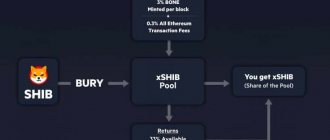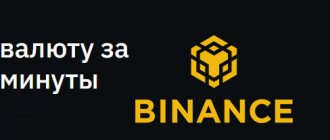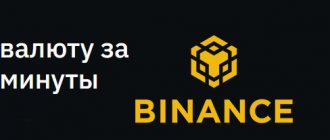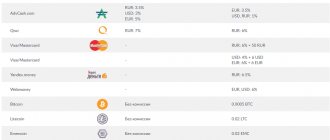A cryptocurrency exchange is one of the main tools for working with digital assets. Initially, these platforms were mostly centralized (CEX), but over time all the shortcomings of this solution began to emerge. These are mainly hacker attacks. There are many known cases of hacking of exchanges, as a result of which users permanently lost money.
Decentralized cryptocurrency exchanges (DEX) are a new stage in the development of trading. It is understood that the funds are stored in the wallets of the users themselves, and the platform acts only as a tool for exchange.
Trading volume across all DEXs for October 2022 was $18.46 billion. This is 23% less than in September ($24 billion). The main volume comes from the decentralized exchanges Uniswap, Curve, 0x, Balancer, Sushiswap.
Trading volume on DEX for January-October 2020 // website data theblockcrypto.com
The editors of Profinvestment.com have prepared an overview of currently popular decentralized crypto exchanges.
What are decentralized exchanges and how do they differ from centralized ones?
The operating principles of DEX and CEX are fundamentally different, although visually the trading functionality is similar. A centralized exchange operates much like a bank. You deposit cryptocurrency, and the exchange stores it and uses it for its own purposes, fulfilling your requests to withdraw or exchange assets if necessary. Users of a centralized exchange do not have their own private keys, as happens when working with a crypto wallet. From a blockchain perspective, the owner of the funds is the exchange. And within it, assets are distributed among users.
In the case of a decentralized exchange, the platform does not store funds. Typically, there is a protocol for matching orders, and funds are transferred between individual wallets using smart contracts. The underlying mechanisms may vary. For example, AMM (automated market maker) can be used instead of orders.
Types of DEX
Basically, decentralized cryptocurrency exchanges are classified according to two criteria:
- Place of execution of transactions . The exchange can be made directly on the main blockchain, or on a third-party one, with subsequent transfer of the results to the main one. The second method is often chosen to speed up and facilitate the process if the base chain is heavily loaded.
- Method of execution of transactions . Some platforms support an order book system similar to that used on CEX. But recently, exchanges with AMM (automated market maker) are gaining great popularity. Their essence lies in the creation of liquidity pools by users, within which instant exchange is then carried out based on the rate determined by supply and demand.
Let's consider decentralized cryptocurrency exchanges, which are currently the most in demand, based on traffic and trading volumes.
FAQ
What is DEX?
A decentralized exchange (DEX) is a trading platform for exchanging cryptocurrencies directly between users, without intermediaries. DEXs do not store user data and funds on their servers, but act as a tool for exchanging digital assets. These are non-profit organizations that have no external regulation and are run by the community itself.
Is Binance a DEX exchange?
Binance is an entire ecosystem, which includes the decentralized platform Binance DEX, launched in 2019. The decentralized exchange operates from Binance, operates on the Binance Chain blockchain and, due to its “kinship” with the centralized exchange Binance, which is #1 in terms of trading turnover in the world, provides fairly high liquidity.
What is the difference between trading on a decentralized exchange and classic ones?
The most basic difference between DEX and centralized classic platforms is that users’ funds remain in their wallets (the exchange does not store them on its servers). Therefore, they are protected from hacker attacks on the trading platform. In addition, DEXs do not require verification and you can trade anonymously.
How to choose a DEX
Choosing the best decentralized cryptocurrency exchange should be done according to your needs. Main factors:
- Availability of the necessary trading pairs.
- Liquidity. The higher it is, the easier and faster trading will be.
- Safety. Of course, in the case of decentralized exchanges, the user stores his funds independently and does not provide confidential information to anyone. However, vulnerabilities and protocols can lead to losses. Make sure the protocol has been audited by independent companies.
- Commissions. When trading actively, fees can eat up a significant portion of your profits.
- Simplicity and convenience of the interface.
Ultimately, you are responsible for your funds. High volatility of assets creates certain risks, and choosing a suitable platform is only one of the steps that can help you make profitable financial transactions.
How to get started with DEX
How to get started with a decentralized cryptocurrency exchange depends on the type of exchange.
Some, like Binance Dex, require you to create a separate cryptocurrency wallet. You will need to set a password, save the keys and seed phrase, which will later be needed to access the funds.
Other DEXs work in conjunction with web3 wallets (for example, Metamask or Trust Wallet) or hardware wallets Ledger, Trezor. In this case, you must click the Connect Wallet button or similar, and then enter the password for your wallet in order to use the funds in working with the protocol. For each transaction, the wallet will ask the user for permission.
In both cases, the user is not required to provide any data - neither phone number, nor email, not to mention name or address. Trading takes place completely anonymously.
Samsung DeX review. Using the Galaxy Note 10 as a desktop replacement
Reader rating for this article: 4.9
(67)
Despite all its power and functionality, a smartphone is still not able to completely replace a personal computer for many people. Whatever the phone screen, it will not be enough for comfortable work with text, tables or photos.
And if previously nothing threatened computers in this regard, then with the release of Samsung Galaxy Note 10, the future of Windows looks extremely sad. It looks like the PC era is finally coming to an end.
Create content on a smartphone!?
My Galaxy Note 10+ is currently lying on the table. A monitor, mouse and keyboard are connected to it via a wire. In the Google Music application, which runs in the background, music is playing, and many windows are open on the screen (Photoshop, editor, browser, file manager). Full multitasking on a “mobile computer”, 8 millimeters thick!
All this works without additional docking stations or expensive accessories. It is enough to have a regular adapter from USB Type-C to HDMI.
Or you can even use the USB Type-C cable that came with your smartphone and connect it to any computer or laptop running Windows or OS X from Apple:
This material, including text and processing of RAW photographs from a Canon DSLR, was entirely prepared on a Galaxy Note 10 smartphone connected to a laptop in DeX mode.
What is Samsung Dex?
Samsung DeX (short for Desktop eX desktop experience) is a technology that allows you to use your smartphone in “computer” mode. That is, when you connect your smartphone via cable to a monitor or laptop, you can work with all mobile applications and documents as on a computer - open many windows at the same time, use the keyboard and mouse.
Additionally, most applications will have a "desktop program" interface. For example, this is what working with a Word document in DeX mode looks like:
This technology could completely change the way we use phones and computers in the near future. You no longer have to carry a laptop with you or have multiple computers (at work and at home).
Your smartphone is your main computer. All that remains is to place monitors and televisions in the places where you work and relax.
The power of modern flagships is simply amazing. The same Galaxy Note 10+ has 12 GB of RAM on board! Such characteristics are rarely found even in desktop computers.
Review of Samsung DeX based on Galaxy Note 10+
So, to launch DeX mode on the Galaxy Note 10, we need either a simple USB Type-C cable and a computer/laptop, or an adapter from USB Type-C to HDMI and an external monitor/TV.
If you chose a combination of Note 10 + computer, then you will first need to install a special program on this same computer - Samsung DeX. It is available for both Windows (version 7 or 10) and Mac OS. You can download it for free at: samsungdex.com
There may be a problem when installing the DeX application on Windows - you need to accept the license terms by checking the box. But this checkmark itself is shifted to the left, outside the visible window:
If you have the same problem, just press the Tab key twice and then the Spacebar, after which the “Next” button will become active.
After downloading and installing Samsung DeX on your computer, simply connect your Galaxy Note 10 via cable, after which the DeX mode window appears on the computer screen:
Here we see a desktop on which you can place application shortcuts, similar to Windows. In the lower left corner there is a row of keys:
- DeX menu. By opening it, you can temporarily lock the desktop or shut down your smartphone on your PC. This is a kind of analogue of the “Start” button on computers.
- A button that opens a screen with a list of installed applications:
- Button for calling a list of running programs
- Return to desktop button (collapse all applications)
- And the back button
Next we see icons of running applications; they can be pinned to this panel, again, similar to the taskbar on Windows.
In the lower right corner there is a “notification curtain”, keyboard control, sound control, search and current date. This panel can be displayed in a compact form:
and in the expanded version, where the battery percentage, current day and other information will be visible:
By the way, while DeX mode is running on the computer, the smartphone will be constantly charged from the USB-C output. Therefore, after several hours of operating the smartphone in DeX mode, its battery will be fully charged.
You can customize the Samsung DeX home screen by choosing your desktop wallpaper (these changes will not affect the settings of the phone itself):
Other settings are also available here: inactivity period (after what time to turn off the screen), keyboard parameters (whether to display the on-screen keyboard when connecting a physical one or not), as well as a number of experimental functions from Samsung DeX Labs:
Anatomy of a window in Samsung DeX
Any application can be launched either in windowed mode or in full screen. In this case, the program window looks like this:
In the upper right corner there are the same buttons as on Windows:
- Hide application
- Expand to full screen
- Close application
In the upper left corner there is only one button - go back (often it also simply closes the application).
The window size can be changed in exactly the same way as on a computer. The number of simultaneously running applications is unlimited:
The appearance of many applications changes depending on the size of the window. Compare the Calculator in the screenshot above and here:
Samsung DeX not only copies the appearance of Windows windows, but also their behavior. For example, double-clicking on the window title will expand it to full screen. And in all text entry fields a menu is available by right-clicking:
The right mouse button also works throughout the system: you can click on application icons or on any file.
Phone functions on a computer
If you receive an incoming call while using your Galaxy Note 10, a pop-up window will appear on the monitor:
If you press the “Reply” button, the smartphone will automatically switch to speakerphone and you can continue working while talking on the phone.
When a message arrives, a corresponding notification pops up in the lower right corner:
You can answer directly in DeX mode:
If you make an outgoing call in DeX mode, the conversation information will be displayed on the Galaxy Note 10 screen.
What else can you do in DeX mode?
Everything you can do on a smartphone is also available in DeX mode, only on the big screen. For example, you can simultaneously watch YouTube in good quality and work with a Word document (or simply turn on the video in full screen):
You can copy files from your computer to your smartphone by simply dragging them from the Windows folder to the DeX folder:
But you won’t be able to copy a file by dragging it from the DeX folder to your computer. This feature is not currently supported.
As for games, it is possible to run them in DeX mode. Moreover, some games even officially support keyboard controls. For example, when you start the game Asphalt 9, a small control instruction will be shown:
The quality of the game is very good even on a large monitor, but you won’t be able to enjoy the game. Sometimes there are slight freezes and FPS drops for literally a second or two, then everything goes well, then freezes again for a second.
The popular game PUBG also launches without problems, but here the situation is even worse.
Yes, the A, W, S, D keys are supported, but to rotate you need to hold down the mouse button and only then can you rotate. It is also inconvenient to shoot, jump and do other actions. And the smoothness of the game leaves much to be desired.
But when you launch Clash Royal, the DeX mode on the computer completely freezes and you need to close the program, and then reconnect the smartphone to the laptop.
Features of the Galaxy Note 10 in smartphone and computer modes
Unfortunately, there is no continuity of operation between smartphone and computer modes. That is, if you watch a movie in some application on your smartphone, and then connect it to a laptop or monitor, you will have to restart this application and turn on the movie.
The same applies to other programs. If you watch YouTube on your TV and then simply unplug the cable, the Galaxy Note 10's screen won't even open the YouTube app, let alone save the position where the video ended.
But if you had tabs open on your smartphone, say, in the Chrome browser, then the same tabs will be open when you launch Chrome in DeX mode. And if music is playing on your smartphone and you connect it to your laptop, the sound comes through the computer’s speakers.
During the entire operating time (which was several hours), the smartphone remained practically cold. This applies to both connecting to a laptop and connecting to a monitor.
It is worth noting that when connecting the Galaxy Note 10 to a laptop, some fonts look small. And for comfortable browsing on the Internet through Chrome or Samsung Internet Browser, you have to zoom in on the image.
You can use the S Pen in DeX mode. Gestures are also supported (when you hold down the button on the S Pen and make various movements with the pen) - you can change the volume or switch the video. The range is quite large. You can connect the Note 10 to the TV at one end of the room and control the pen while sitting on the couch on the opposite side. Gestures also work when connected to a Windows/OS X laptop.
The dark theme (Night Mode) works in DeX mode, just like on a smartphone. When activated, all standard applications will look like this:
I would also like to note the unusual key combination when changing the language. If on a Windows PC you need to press Shift+Alt or Shift+Ctrl to change the keyboard layout, then in DeX mode the key combination Ctrl+spacebar or Shift+spacebar works.
Other combinations are supported:
When you connect your smartphone to a laptop, the sound of all applications and movies is played through the laptop's speakers, but if you want, you can change the sound source on the Note 10.
conclusions
Even 20 years ago, Microsoft was well aware that computers would become increasingly mobile and personal. However, the company was never able to make its Windows work equally well on both a small smartphone screen and a large monitor. As a result, Windows has completely lost the mobile device market and, judging by what is happening today, may lose even more of the personal PC market.
Apple is developing two operating systems in parallel, the applications between which are completely incompatible. With this approach, you will need two different devices anyway.
But what Samsung is trying to implement together with Google is the most interesting and elegant solution. You have only one device, the applications on which look equally good and convenient both on a smartphone and on a big screen.
Samsung Galaxy Note 10 is the first smartphone to support DeX mode without any additional devices or accessories.
Naturally, not everything is smooth here, many functions are missing, and working in this mode is not as comfortable as on a Windows PC or Mac OS. Moreover, for many tasks, a computer will always be more convenient and functional than any smartphone.
But this idea has a huge future and Google seems to be well aware of this. After all, an analogue of the “Samsung” DeX mode has already been implemented in the new version of Android 10. That is, each smartphone, when connected to an external screen, will change its interface.
And this is just the beginning...
PS
Don’t forget to subscribe in Telegram to the first popular science site about mobile technologies - Deep-Review, so as not to miss the very interesting materials that we are currently preparing!
How would you rate this article?
Click on the star to rate it
There are comments at the bottom of the page...
Write your opinion there for all readers to see!
If you only want to give a rating, please indicate what exactly is wrong?
Expert opinions on the prospects of DEX
Founder and CEO of Dogifox, cryptocurrency analyst Nicholas Merten argued back in August that decentralized exchanges have higher trading volumes compared to centralized ones. According to the expert, this has been the dream of many since 2022.
Seeing decentralized exchange volume take major market share away from centralized exchanges leaves me truly excited.
This has been a dream in the making for many since 2022. It's messy, full of noise, but the core principle is clear.
It works. #DeFi pic.twitter.com/ocFaFn57PG
— Nicholas Merten (@Nicholas_Merten) August 12, 2020
Vitalik Buterin said back in 2022 that centralized exchanges should “burn in hell,” mainly because people often have to pay huge amounts of money to list new tokens on them. According to him, centralized exchanges exist only because they serve as a gateway between the fiat world and cryptocurrencies.
American entrepreneur and crypto enthusiast John McAfee said a year ago that “centralized exchanges are our weak point” and even launched a decentralized exchange running on the Ethereum (ETH) blockchain, calling it McAfeedex. However, the site did not gain popularity and no longer operates.
The McAfee Distributed Dex beta version is coming 10/7. Play with it. It takes time for enough users to join to make it real, but if you play, and be patient, you will see it's the door that frees us from Government's cornerstone of control: Fiat currencies. It can't be shut down pic.twitter.com/W3XCExspQT
— John McAfee (@officialmcafee) October 5, 2019
Binance CEO Changpeng Zhao has emerged as a strong proponent of decentralization. The Binance DEX exchange continues to develop, and the developer believes that within a few years, decentralized exchanges can absorb centralized ones; He also spoke positively about AMM technology.
#Binance supports DEX and DEFI, even if they may be wrongly perceived as competing with some of our offerings. It's not competition, it's growing the industry together.
Given @binance's influence in the industry, we will do our best to help all projects grow. https://t.co/bTlcFnCUnP
— CZ Binance (@cz_binance) August 22, 2020
Emazing in Korean? - Yes!
The ease with which your smartphone turns into a full-fledged PC is mesmerizing. Seems. this is the future! However, the idea of an adapter that turns a smartphone into a full-fledged workstation is far from new.
Both Microsoft and Motorola made their own versions of this accessory, but they did not gain popularity. There were several reasons for this :
1. Lack of applications that are convenient to use in desktop mode
2. Shortage of the accessory itself - almost no one has seen them on sale
And the very idea of replacing the usual desktop computer with some small box was blasphemous.
But today Samsung has every chance of becoming the first company that has truly taken a step towards the post-computer era, and is introducing to the masses the idea that a smartphone is a computer.
And that's why:
1. Dex is easy to buy
2. The accessory costs about 10,000 rubles
3. It is convenient to use
4. There are already about 20 adapted applications
5. The accessory looks stylish
It is clear that 20 applications is not enough, but the very fact that the Samsung Apps branded application store already has a special section with applications for Dex allows us to hope that the number of programs and games will increase.
Advantages and disadvantages
Pros:
- Full management of your funds. There is no need to trust them to third parties and companies.
- Anonymity. There is no need to provide any personal information or undergo verification.
- Availability. While regulators in different countries periodically impose bans on the use of crypto exchanges, decentralized platforms can be used by anyone from any country.
Minuses
- Trade restrictions. It is difficult to organize the exchange of cryptocurrencies hosted on different blockchains. Although this problem is already partially solved by synthetic assets.
- Somewhat more complex controls. You need to store keys and seed phrases from wallets, instead of just creating an account on the exchange.
- Platforms may face scalability issues because blockchain imposes certain restrictions on the number of transactions per second.
Everything is cool, but... I have questions
If you put emotions aside and evaluate Dex with a sober and practical look, 2 questions appear.
Question No. 1. Who is this accessory for?
To use Dex, you need a Samsung S8 or S8 plus smartphone. Also, you need a keyboard, mouse, and of course a monitor. It’s hard for me to believe that someone has all this at home, but no system unit.
Rather, this accessory is aimed at corporate use, but small companies are unlikely to buy their employees a brand new flagship and throw away their desktop PCs.
And large corporations will not switch to Dex because of their security policies - this is additional money, time and headache.
Question No. 2. Application database
As the experience of previous manufacturers of such accessories shows, a gadget without software very quickly loses popularity. Yes, the office suite is good, but I would like to see more specialized applications for designers, programmers, some terminal applications, maybe games.
If Samsung encourages and contributes to the development of programs and games for Dex, that will be cool. The target audience will increase and the accessory will become popular.
Wait and see.











